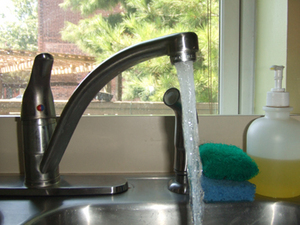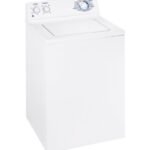A home water softener unit will help you save money by protecting your appliances and plumbing from calcium scale buildup. Savings will be noticeable in the amounts of soap for clothes and bathing that is needed. Choosing the right kind and size can be daunting.
The purpose of a water softener unit is to counteract the negative effects of hard water. The calcium and magnesium in hard water is left as deposits (scaling) inside plumbing and appliances that use water. It can eventually lead to costly repairs or replacement of dishwashers, water heaters, washing machines and other appliances. Those same deposits make hair and skin feel dry and brittle. Millions of dollars a year are spent by consumers for products to reverse the effects.
There is a long list of factors to consider when choosing a water softener. Is it for commercial or domestic use? What size is needed and how high a softener rating? How does it need to be installed and how convenient is it to use? How often will maintenance be necessary? What is the Hardness Grain level of your water? All of these are important questions to answer before making a choice.
Water softeners are cation exchange devices. They filter the calcium/magnesium molecules from hard water. Cations are the positively charged ions of calcium/magnesium that some processes replace. There are four available types of softener units.
The most well known and understood unit uses salt or potassium to affect a change in the water. These Salt Based units use dissolved sodium chloride (brine) that comes in the form of natural “zeolites” (microporous crystalline solids) or synthetic resin beads. It releases free sodium ions in exchange for the calcium/magnesium. Back flushing with brine through the system recharges the exchange medium. Frequency is dependent on how much water is used, the unit size, and how much exchange medium is available.
Water processed through these systems should not be used for drinking, houseplants or gardens due to the salinity. The sodium content can be a health risk for some. The back flush water can overload smaller septic systems.
The recharge medium (salt or potassium) must be refilled periodically. There is a salt free alternative available.
Catalytic Media, salt free units that use a nano-technology are gaining popularity with homeowners. The system bonds calcium carbonate to a minute crystal form that stays, unnoticeable in the flow of water. They are said to not only keep new scale (100% effective) from forming in plumbing and appliances, they will reduce previous buildup over time. They are recommended for residential or commercial use with grains of hardness level of 50 or less.
They are great for people concerned about sodium intake. No additional normal maintenance is necessary. The processed water still has all essential minerals intact and is completely environmentally friendly. No back flushing is needed so 100% of the water is available for use.
Catalytic water softeners cannot be used where oil or hydrogen sulfide (H2S) is present in the water supply.
It was extremely difficult to find unbiased reviews of Catalytic Media water softeners. There are reports that this relatively new technology is less than reliable. Mr. Stephen Lower (www.chem1.com), a retired faculty member of the Department of Chemistry at Simon Fraser University in Canada says, “There is simply no credible mechanism known to science that can explain the claimed results (re: Catalytic Media technology), none of which has been scientifically validated anyway.”
Reverse Osmosis water softeners use ultra-fine filtration under pressure to filter out 98% of suspended particles. Water molecules pass through the semi-permanent membrane but salts, heavy metals and most solids are captured. The process strips all essential minerals from the water flow. A WHO (World Health Organization) report says that the water should not be used for plant, animal or human consumption.
The system is wasteful as the back flush leaves only 5- 15% of water available for use. It requires a storage tank that must be disinfected regularly to combat the growth of bacteria. The osmosis membranes are expensive to replace.
Finally, Magnetic Softeners are supposed to precipitate out carbonate salt in the water. The process reduces the concentration of calcium/magnesium ions. They are the most inexpensive choice of water softener units.
The magnetic field is limited and only water that comes in contact with the field is processed. The efficiency fluctuates in relation to the field size. The change is temporary. Water reverts to its hard state in 48 hours. Any water still in the storage tank has to be reprocessed. Nearby high voltage emitters can cause interference to Magnetic Softener units.
A water softener unit will save you money and protect your plumbing and appliances in areas with hard ground water. Check with local dealers and ask around to find out what types of units are the most effective where you live. Take the time to make the right choice and enjoy the benefits of soft water for cleaning and bathing.



